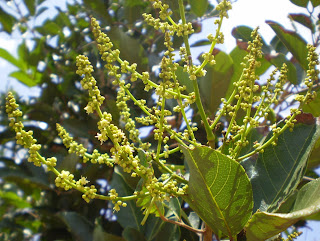Langsat
Rambutan
Mangosteen
Durian
).
Malaysia Shrimp Paste
BELACAN
(PRONOUNCED BUH-LAH-CHAN) IS ONE OF THE MOST POPULAR DISH IN MALAYSIA AND
ALWAYS BE ONE OF THE INGREDIENT IN MALAYSIAN COOKERY. UNLIKE THE OILY, GARLICKY SHRIMP PASTE
USED IN THAI CURRIES, BELACAN IS A HARDENED BLOCK OF SHRIMP PASTE, MADE FROM TINY SHRIMP MIXED
WITH SALT AND FERMENTED. THE FERMENTED PASTE IS THEN GROUND INTO A SMOOTHER
PASTE, THEN SUN DRIED, SHAPED INTO BLOCKS, AND ALLOWED TO FERMENT AGAIN. THE
RESULTING BLOCKS ARE CHALKY AND ONLY SLIGHTLY MOIST. POWERFUL IN BOTH SMELL AND
TASTE, BELACAN
IS ALWAYS TOASTED AND USED IN SMALL QUANTITIES, PROVIDING A SAVORY DEPTH TO
CURRIES AND PASTES. (PLAY AROUND WITH THE AMOUNT OF BELACAN YOU PREFER
IN YOUR SAMBALS. IF, LIKE ME, YOU ALWAYS ADD MORE THAN THE RECOMMENDED NUMBER OF
ANCHOVIES TO YOUR CAESAR SALAD DRESSINGS, YOU MAY JUST WANT TO ADD AN EXTRA
HALF TEASPOON OR SO OF BELACAN TO YOUR SAMBALS!)




.jpg)
.jpg)







.JPG)


.jpg)








.jpg)



.jpg)
.jpg)








.jpg)